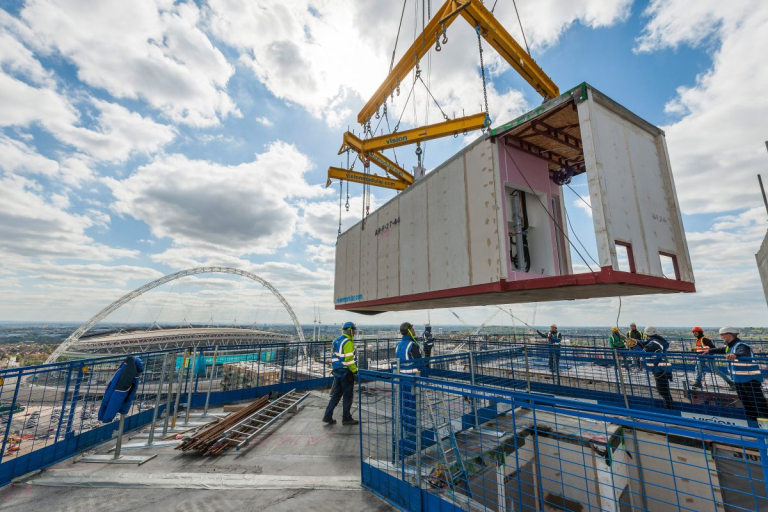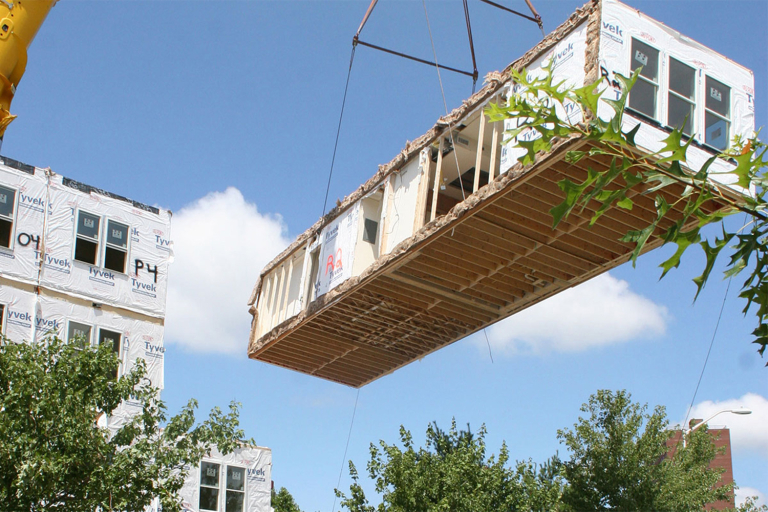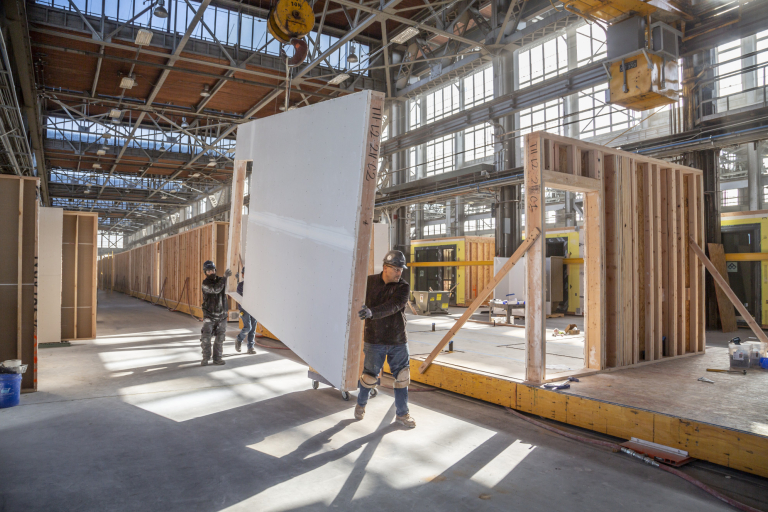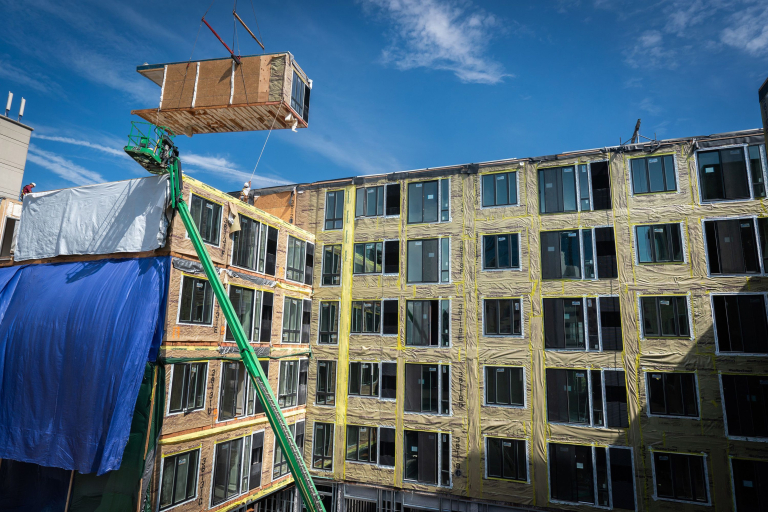In the world of construction, new ideas are changing how we build things. One exciting idea is using Modular Construction and Building Information Modeling (BIM) together. These two things can make the construction process much smoother.
In this article, we'll learn about Modular Construction and BIM Integration. We'll see how they work together to make construction faster and better. Let's explore how this powerful combination is shaping the future of construction.
What is Modular Construction?
Modular construction means building parts of a building somewhere else, not at the actual construction site. These parts, called modules, are made in a special factory where everything is controlled and done the same way every time, including the creation of construction drawings. They follow the same rules and use the same materials as regular buildings.
After making these modules, they transport them to the construction site and put them together to make the complete building. It's a way of building that's known for being fast and efficient, and it follows all the usual building rules.

The Advantages of Modular Construction
Saves Time
Modular construction is faster because part of the work happens in a factory at the same time as the groundwork is done at the construction site. This helps keep the project on track and makes construction quicker. It's possible to save 30 to 60 percent of the overall project time with modular construction.
No Weather Delays
When modules are made in a factory, there's no need to worry about bad weather slowing down construction on the site. It also means workers have safer and more comfortable conditions to work in, which helps them do a better job. The modules usually come with things like floors, cabinets, counters, plumbing, and electrical fixtures already installed, so they're ready to use quickly.
Lower Labor Costs
Finding skilled workers for construction can be hard and expensive, especially in cities. Modular construction helps by keeping these skilled workers in one place where it's safe and controlled. Modular factories can be located where they can attract these skilled workers and have easy access to materials and transportation, like highways and rail lines. This can save up to 25 percent on construction costs.
Less Waste
Modular building reduces waste a lot. A study in the UK showed that you can reduce up to 90 percent of materials used with modular construction. This is great for the environment because it means less waste ends up in landfills. Some factories even try to recycle as much as possible when putting the building parts together.

The Challenges of Modular Construction
Mass Production and Limited Variety
Modular construction works best when you're making lots of similar things, like apartment buildings or hotels. It's like making a bunch of the same thing on a big scale. If you try to make each part different, it can slow things down and cost more for both the people building and the people buying.
More Planning Upfront
With modular, you need to decide on a lot of things early in the process. Architects, engineers, and builders need to understand how the modules will be put together and how they'll fit into the building. For tall buildings, it's especially important to make sure the modules fit together correctly and can handle the weight. This means deciding on things like finishes and appliances before construction starts, which can be a headache if you change your mind later.
Complex Approval Process
Getting approvals for modular construction can be complicated. All projects have to follow laws and rules, but these can be different for modular construction. Some places are more open to it than others. Ideally, the modules should meet state codes and get inspected in the factory. In some places, local inspections are needed on-site, which adds complexity. Strong unions can also make things more complicated.
Risk with Few Suppliers
Modular construction means relying on a small number of suppliers to make the building parts. While more companies are starting to make commercial and multi-family modules, there aren't many. This puts a lot of risk on these suppliers, and buyers need to be very careful when choosing them. Switching suppliers during a project is a big challenge.

The Role Of BIM In Modular Construction
Making Construction Digital
Some construction companies are starting to use digital methods like Digital Engineering. One important part of this is digitizing their work processes, including architectural visualization. This means using computers to create visual representations of architectural designs, which can make construction faster and less risky.
Digitization helps companies estimate costs more accurately, reduce the need to redo work, make project progress more transparent, and keep up the quality of their work. With BIM, companies can create digital workflows for making complex building parts off-site.
Improving MEP Coordination
Coordinating Mechanical, Electrical, and Plumbing (MEP) work can be time-consuming but is essential, especially in modular construction. All three disciplines must know exactly where their installations go during the planning phase.
Mistakes can waste time and effort. To avoid this, companies use BIM. BIM provides specialists with a 3D view of the building before construction starts. It helps them find and fix issues with MEP systems early on. BIM's precision is a big help in pre-fabrication design.
Controlling Costs
Modular construction can reduce costs, but it can also become more expensive if not planned and executed correctly. BIM helps companies manage costs. It streamlines workflows, reduces waste in the pre-fabrication stage, and helps find the right partners who can lower insurance costs and project risk. According to a McKinsey study, BIM has given positive returns on investment for at least 75% of construction companies.
Sticking to the Timeline
Modular construction can be completed 30% to 50% faster than traditional construction because work happens off-site and on-site at the same time. This helps avoid delays due to bad weather. To coordinate work across locations and stay on schedule, companies use BIM.
It helps with communication, brings all the project's stakeholders together, and speeds up the project. In some countries, like the UK and Norway, BIM is also used to electronically submit designs to the government for quick approval.
Reducing Material Waste
Modular construction can greatly reduce waste, even achieving zero waste in some cases. Most of the building components are designed and made off-site. This not only cuts labor costs and increases productivity but also makes construction more sustainable. It can reduce waste by up to 90%.
BIM is useful here too. It helps project managers reduce waste by visualizing the plan in 3D, spotting errors early, and ensuring precision in the whole process. This reduces the need to redo work and makes the construction process more efficient.

Unlock Efficiency with Harmony Advanced Technologies! 🌍
Are you ready to take your construction projects to the next level? Look no further! At Harmony Advanced Technologies, we bring over 20 years of global expertise in BIM/CIM modeling to your construction needs.
🌟 Why Choose Us? 🌟
Decades of Experience: With two decades of experience, we understand the ins and outs of BIM/CIM modeling.
Global Reach: We've served clients all around the world, delivering excellence in every project.
Streamlined Efficiency: Our solutions will make your construction projects faster and smoother.
Let us transform your construction dreams into reality by clicking here. Explore the world of Harmony Advanced Technologies today!
Categories





